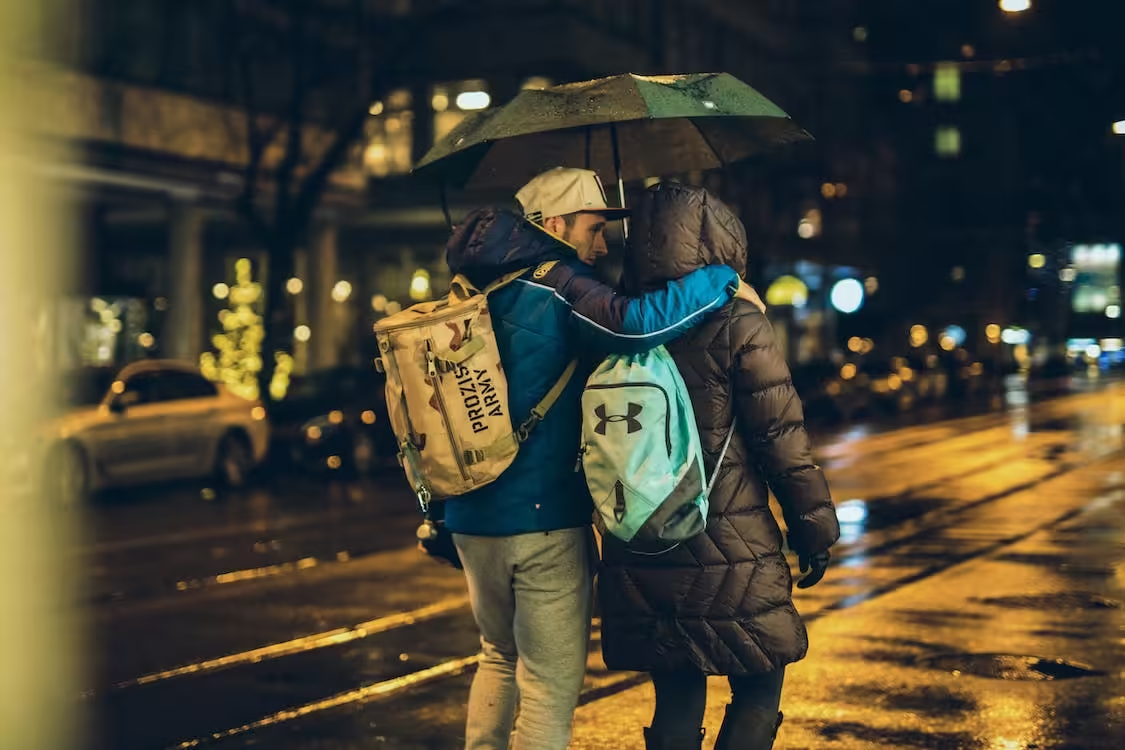“Navigating Urban Environments with Women’s Safety in Mind” is designed to empower women with the knowledge and skills needed to confidently navigate city streets while prioritizing their safety. Recognizing the unfortunate reality that women often encounter harassment, assault, or other safety concerns in urban settings, this guide offers practical strategies to mitigate these risks.
At its core, this guide emphasizes the importance of being aware of one’s surroundings, identifying potential dangers, and making informed decisions to reduce the likelihood of encountering harm. A key element of this approach is fostering a self-defense mindset, which goes beyond physical techniques to include understanding personal boundaries, practicing assertiveness, and utilizing de-escalation strategies. By equipping women with these skills, the guide aims to boost their confidence and prepare them to handle potentially dangerous situations effectively.
Navigating urban environments can be challenging, particularly when it comes to ensuring women’s safety. By focusing on empowering women to move confidently and assertively, these strategies aim to reduce potential risks and enhance overall personal security in city settings.
1. Understanding the Environment
Before venturing into any urban environment, it is crucial to gather information and understand the surroundings. Familiarize yourself with the neighborhood’s reputation, crime statistics, and areas of concern. Utilize online resources, local safety apps, and community forums to gain insights from other residents or visitors. Being aware of potential hotspots or general safety concerns can help you plan alternative routes and avoid high-risk areas.
2. Practicing Situational Awareness
Situational awareness plays a vital role in women’s safety, regardless of the location. Always be observant of your surroundings, paying attention to people, vehicles, and potential escape routes. Avoid distractions such as headphones that may hinder your ability to recognize potential threats. Trust your instincts and listen to your gut feelings – if something feels off or out of place, take precautions and alter your course.
3. Traveling in Groups
Women’s safety can be significantly enhanced by traveling in groups, especially during late hours or in areas with a higher risk profile. Whenever possible, arrange to go out with friends, colleagues, or family members. There is strength in numbers, and perpetrators are less likely to target a group compared to an individual. Additionally, coordinated travel plans and mutual support among group members can provide an added layer of security.
4. Utilizing Safe Transportation Options
Choosing safe transportation options is essential for women’s safety in urban environments. When using public transportation, stick to well-lit and busy stops and opt for buses or trains with a larger number of passengers. Utilize reliable ridesharing services that offer safety features such as GPS tracking, driver identification, and trip-sharing capabilities. Familiarize yourself with local taxi services that have a positive reputation for women’s safety.
5. Self Defense Measures
Though prevention is key, it is crucial to be prepared for worst-case scenarios. Learning self defense techniques can significantly boost women’s safety and confidence when navigating urban environments. Consider enrolling in self defense classes or workshops that focus on practical and effective techniques for personal protection. Carry personal safety devices such as pepper spray, personal alarms, or tactical flashlights that can serve as deterrents and aid in emergency situations.
6. Building Networks and Support Systems
Establishing networks and support systems can be immensely beneficial in enhancing women’s safety. Connect with like-minded individuals or join community groups that promote safety and awareness. Participate in local events or workshops that discuss women’s safety in urban environments and foster a sense of solidarity. Share information, experiences, and safety tips within these networks to empower others and create a safer urban environment for all.
Frequently Asked Questions
1. How can I stay safe while walking alone in urban areas?
Some tips to stay safe while walking alone in urban areas are:
- Stick to well-lit and busy streets.
- Avoid shortcuts and isolated areas.
- Stay aware of your surroundings and trust your instincts.
- Carry a personal safety device, such as pepper spray, for extra protection.
2. Are there any apps that can help enhance women’s safety in urban environments?
Yes, there are several apps available that can enhance women’s safety, such as:
- SafeTrek: Allows users to alert emergency services with their GPS location if they feel unsafe.
- bSafe: Offers a range of features, including live streaming, fake calls to get out of uncomfortable situations, and automatic SOS alerts.
- Circle of 6: Enables users to quickly and discreetly alert friends if they feel threatened.
3. How can I protect my personal belongings while in crowded urban areas?
To protect your personal belongings in crowded urban areas, follow these tips:
- Keep your bag in front of you and close to your body.
- Avoid carrying valuables or large amounts of cash.
- Use locks or secure compartments for your belongings.
- Be cautious of pickpockets and watch out for distractions.
4. What should I do if I feel uncomfortable or threatened by someone on the street?
If you feel uncomfortable or threatened by someone on the street, you can take the following steps:
- Trust your instincts and try to remove yourself from the situation.
- Find a well-lit and populated area or enter a nearby store or establishment.
- If necessary, seek assistance from bystanders or call the local authorities.
5. How can I plan my route to ensure safety when using public transportation in urban areas?
To ensure safety when using public transportation in urban areas, consider these tips:
- Use well-known and well-lit stations or stops.
- Plan your route in advance and be aware of alternative options.
- Wait for public transportation in busy and visible areas.
- Stay vigilant and avoid engaging with suspicious individuals.
6. Are there any self defense techniques that can be helpful for women in urban environments?
Yes, learning basic self defense techniques can be helpful for women in urban environments. Consider attending self defense classes or workshops, where you can learn techniques like:
- Effective striking techniques.
- Awareness and avoidance strategies.
- Escape and self-protection techniques.
7. What precautions can I take to stay safe when using rideshare services in urban areas?
To stay safe when using rideshare services in urban areas, follow these precautions:
- Confirm the driver’s identity and the vehicle details before getting in.
- Share your ride details and real-time location with a friend or family member.
- Sit in the back seat and have an exit strategy in mind.
- Trust your instincts and cancel the ride if you feel uncomfortable at any time.
8. How can I maintain my personal safety during nighttime activities in urban environments?
To maintain personal safety during nighttime activities in urban environments, consider the following:
- Stick to well-populated and well-lit areas.
- Avoid excessive alcohol consumption which may impair judgment.
- Stay in groups and avoid walking alone at night.
- Use transportation services or walk with a trusted companion.
9. How can I make my home safer in an urban neighborhood?
To make your home safer in an urban neighborhood, take these measures:
- Install secure locks on all doors and windows.
- Use window coverings to prevent visibility from the outside.
- Get to know your neighbors and establish a sense of community.
- Consider installing a security system or surveillance cameras.
10. What resources are available for further information on women’s safety in urban environments?
For further information on women’s safety in urban environments, you can consult the following resources:
- Local law enforcement agencies or police departments.
- Women’s safety organizations or nonprofits.
- Community workshops or seminars on personal safety.
- Online forums and communities dedicated to women’s safety topics.
Conclusion
Understanding the unique challenges women face in urban environments is essential for enhancing their safety. Crowded streets, public transportation, and poorly lit areas all present specific risks that women must navigate. Awareness of these challenges allows women to take necessary precautions, such as avoiding isolated areas and staying alert to their surroundings.
Empowerment comes from taking proactive steps, such as learning self-defense techniques and carrying personal safety devices. These actions not only boost confidence but also reinforce a woman’s ability to move freely and securely in any urban setting. Through vigilance, understanding, and active participation in fostering safer communities, women can assert their right to navigate urban spaces with confidence and ease.





